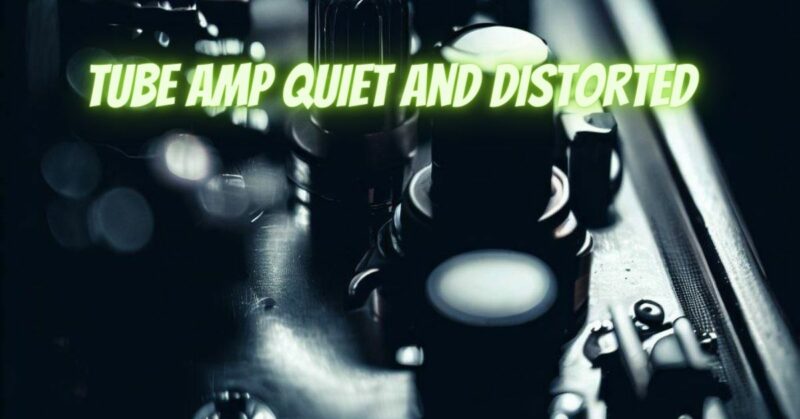Tube amplifiers are beloved for their warm and rich sound, but occasionally, they can develop issues such as being quiet and distorted. If you’re experiencing these problems with your tube amp, it can be frustrating and affect your overall listening experience. In this article, we will explore some common causes and potential solutions for a tube amp that is both quiet and distorted.
- Tube Issues:
One of the most common causes of a quiet and distorted tube amp is a faulty or worn-out tube. Tubes are crucial components of tube amplifiers, and over time, they can degrade or become damaged. Try replacing the tubes in your amp with new ones and ensure they are properly matched and biased. This can often resolve issues with low volume and distortion.
- Input and Output Connections:
Check the input and output connections of your tube amp. Ensure that all cables are securely connected and that there are no loose or damaged connectors. Sometimes, a poor connection can result in reduced volume and distorted sound. Clean the connectors and reseat the cables to ensure a proper connection.
- Biasing:
Tube amplifiers require proper biasing to operate optimally. Incorrect bias settings can lead to distortion and low volume. If you have the necessary knowledge and skills, you can check and adjust the bias settings according to the manufacturer’s specifications. However, biasing can be complex, so it’s recommended to consult a qualified technician or amp specialist for assistance.
- Power Supply Issues:
Insufficient or unstable power supply can also contribute to a tube amp sounding quiet and distorted. Check the power source and ensure it provides consistent voltage and current. If you’re using a power conditioner or surge protector, ensure it’s in good condition and capable of delivering clean power to the amp. Unstable power can negatively impact the performance of your amp.
- Speaker Impedance:
Incorrect speaker impedance matching can cause low volume and distortion in tube amps. Make sure your speakers are properly matched to the amp’s impedance rating. Mismatched impedance can strain the output transformer and result in poor sound quality. Consult the manufacturer’s specifications and use speakers with the recommended impedance.
- Capacitor Issues:
Faulty capacitors can also contribute to low volume and distorted sound in tube amps. Over time, capacitors can deteriorate or fail, affecting the overall performance. If you suspect capacitor issues, it’s best to have them inspected and replaced by a qualified technician.
Conclusion:
A quiet and distorted tube amp can significantly impact your listening experience. By troubleshooting the possible causes mentioned above, you can often identify and resolve the issue. However, if you’re unsure about performing any repairs or maintenance yourself, it’s best to consult a qualified amp technician. They have the expertise to diagnose and fix any underlying problems, ensuring that your tube amp produces the desired sound quality with clarity and power.


